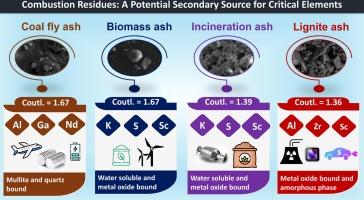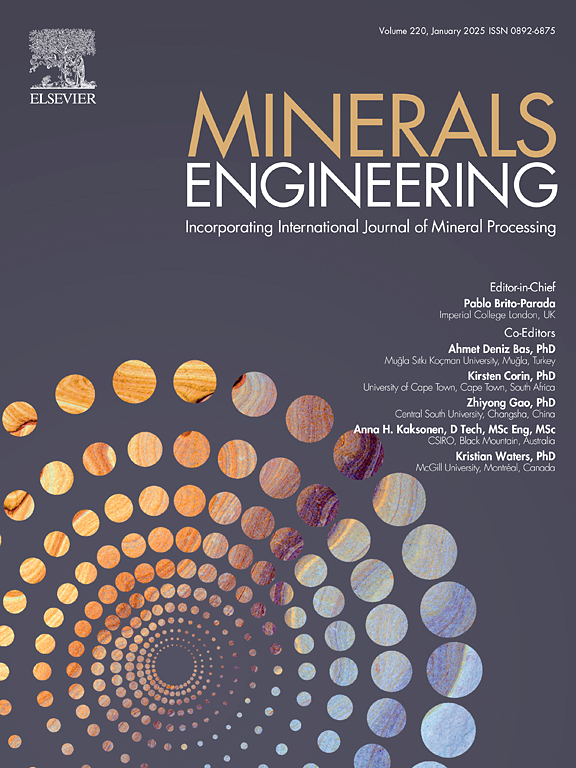Prospect for recycling critical elements in combustion residues of coal, lignite, and biomass feedstocks
IF 4.9
2区 工程技术
Q1 ENGINEERING, CHEMICAL
引用次数: 0
Abstract
The combustion residues derived from coal, lignite, biomass, and spent wash could be recycled to extract critical elements required for energy transition. To recycle these elements from the combustion residues, it is necessary to understand their chemical mode of occurrence in the ash. This study presents the content of critical elements and their chemical mode of occurrence in coal, lignite, biomass, and incinerator ash. Lignite ash, rich in Ca and Si, offers Sc (31 mg/kg) and Nd (212 mg/kg), while coal ash, dominated by Si and Al, contains Ga (44.8 mg/kg). Biomass and spent wash ash, characterized by K, Ca, and S, present substantial potential for potash and Sc. Lignite ash primarily contains rare earth elements (REEs) in metal oxide-bound fractions, whereas in coal ash, the REEs are associated with the hard mullite or quartz phase. Biomass and incinerator ashes have significant water-soluble potash, and the Sc is associated with metal oxides. Green acids can extract critical elements from lignite, biomass, and incinerator ashes, but extracting from coal ash requires harsh conditions. Future research should concentrate on green extraction processes considering the chemical patterns of occurrence of critical elements.

煤炭、褐煤和生物质原料燃烧残渣中关键元素的回收前景
从煤、褐煤、生物质和乏洗煤中提取的燃烧残渣可以回收利用,以提取能源转型所需的关键元素。要从燃烧残渣中回收这些元素,就必须了解它们在灰烬中的化学存在方式。本研究介绍了煤、褐煤、生物质和焚烧炉灰中关键元素的含量及其化学存在方式。褐煤灰含有丰富的钙和硅,可提供钪(31 毫克/千克)和钕(212 毫克/千克),而煤灰则以硅和铝为主,含有镓(44.8 毫克/千克)。以 K、Ca 和 S 为特征的生物质和废洗涤灰具有很大的钾和钪潜力。褐煤灰烬主要含有金属氧化物结合组分中的稀土元素 (REE),而在煤灰中,稀土元素与坚硬的莫来石或石英相联系在一起。生物质和焚烧炉灰烬中含有大量水溶性钾盐,钾盐与金属氧化物相关。绿酸可以从褐煤、生物质和焚烧炉灰烬中提取关键元素,但从煤灰中提取需要苛刻的条件。未来的研究应集中于考虑关键元素出现的化学规律的绿色萃取工艺。
本文章由计算机程序翻译,如有差异,请以英文原文为准。
求助全文
约1分钟内获得全文
求助全文
来源期刊

Minerals Engineering
工程技术-工程:化工
CiteScore
8.70
自引率
18.80%
发文量
519
审稿时长
81 days
期刊介绍:
The purpose of the journal is to provide for the rapid publication of topical papers featuring the latest developments in the allied fields of mineral processing and extractive metallurgy. Its wide ranging coverage of research and practical (operating) topics includes physical separation methods, such as comminution, flotation concentration and dewatering, chemical methods such as bio-, hydro-, and electro-metallurgy, analytical techniques, process control, simulation and instrumentation, and mineralogical aspects of processing. Environmental issues, particularly those pertaining to sustainable development, will also be strongly covered.
 求助内容:
求助内容: 应助结果提醒方式:
应助结果提醒方式:


